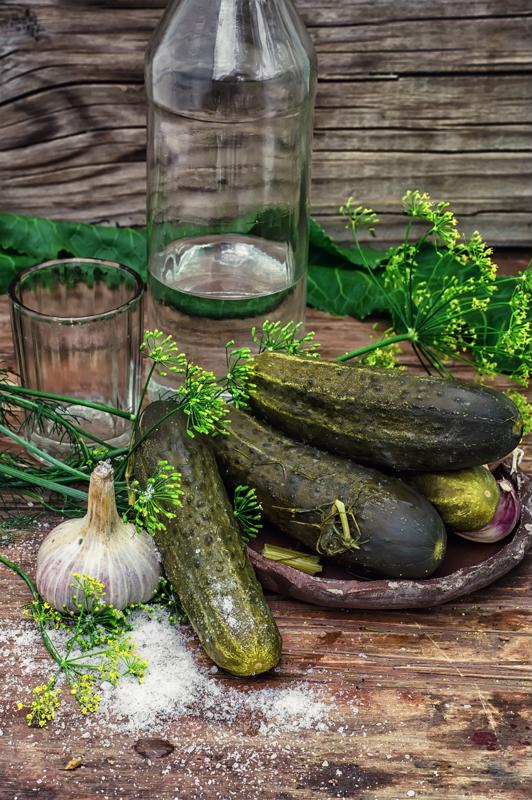When the word pickle comes up in a conversation about food, many people’s minds drift to the thought of a classic kosher dill served with a sandwich or on the side of a deli plate. While cucumbers are the most well-known pickled vegetable (or fruit, for that matter), there are many other variations that can surprise and delight diners. Perhaps the best news is that these delicious variations can easily be made at home or in even the smallest commercial kitchens. Austin culinary school students have plenty of options when it comes to making their own pickled fruits and vegetables.
 Pickling is a classic choice for cucumbers, but works well with many other fruits and vegetables.
Pickling is a classic choice for cucumbers, but works well with many other fruits and vegetables.How does pickling work?
The process commonly referred to as pickling uses a few similar approaches to make a shelf-stable food out of a fruit or vegetable that would otherwise soon spoil. Placing cleaned food in brine – which frequently includes a healthy dose of salt but can also use sugar and incorporate various herbs and spices to contribute to the flavor of the food – or vinegar leads to changes that extend the food’s consumable lifespan. That process, along with the addition of other flavoring agents, also creates significant changes to the food’s flavor.
Pickling relies on an acidic liquid like vinegar and heating to achieve the end result, which is a sour flavor and longer shelf life. Fermentation, on the other hand, works because of the reaction between the sugars and bacteria that are naturally present in the food. As The Kitchn pointed out, these two processes lead to similar results but have different mechanisms of action that are important for the science of food safety. In terms of taste, you can achieve broadly similar results with both vinegar and brine. Sometimes, fermenting will create an acid, leading to a food that is pickled as well as fermented.
Pickling goes far beyond cucumbers
What can you pickle besides cucumbers? There are a wide variety of options, as most foods and vegetables – along with eggs, meats and many other foods – can be pickled or fermented.
Pickled onions
One classic to consider that goes beyond a cucumber is the pickled onion. Seen as part of the traditional English ploughman’s lunch (although raw onion slices will sometimes take its place) as well as everywhere from the southern U.S. to Hong Kong, pickled onions offer an exciting mixture of a variety of flavors. Bon Appetit offered a recipe for quick pickled red onion that can be ready in as little as an hour and will last up to two weeks – plenty of time to get used up in a busy kitchen. With just apple cider vinegar, salt and sugar involved, you can efficiently prep these onions in bulk and quickly reach for them while working on the line.
Pickled cherries
Not quite the neon red maraschino cherries popular as a cocktail and sundae garnish, these pickled fruits mix sweet and sour to offer a unique and flavorful addition to a variety of dishes, including sandwiches. ABC’s The Chew shared a simple recipe including salt, black peppercorns, a bay leaf and red wine vinegar alongside sugar, orange zest and cinnamon sticks. These cherries will last up to one month when refrigerated.
Pickled radishes
Pickled radishes are a versatile addition to many different dishes, from burgers to a variety of Korean foods. Better Homes & Gardens offered instructions for making a quick pickled radish as well as a more involved recipe that lends itself to canning and longer storage.

